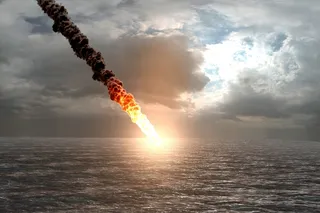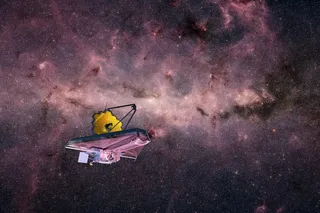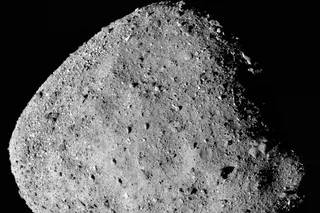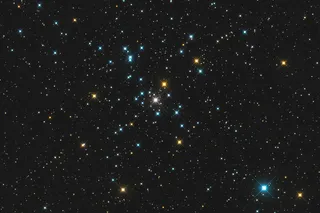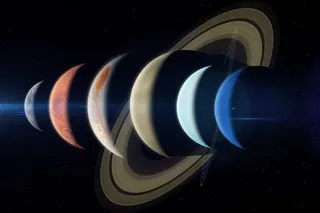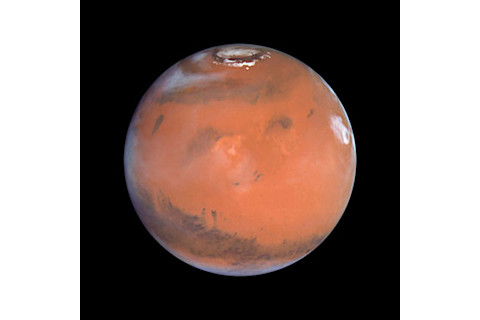
(Credit: NASA)
NASA
Humankind's experience visiting worlds beyond our own begins and ends with the dozen Apollo astronauts who skipped about on tiny swaths of the moon. But that doesn't mean we can't experiment with how and where we might visit (or live) on the extreme surfaces of other worlds. A few studies out recently are doing just that. Radiation? Big deal Our planet provides a protective shield from the most damaging radiation produced by the sun—a shield not available on the moon or Mars. It's a hazard for any human leaving the planet, and it's a hazard for plants, too. However, a new study of the Chernobyl area in the Ukraine, site of the famous nuclear accident, is actually raising hopes for space farming.
Even 25 years after the catastrophic nuclear accident at Chernobyl, the area around the site harbors radioactive soil. But researchers working there have found that oil-rich flax plants can adapt and flourish in that fouled environment with few problems. Exactly how the flax adapted remains unclear, but what is clear is that two generations of flax plants have taken root and thrived there, and that could have big implications for growing plants aboard spacecraft or on other planets at some point in the future. [Popular Science]
In fact, scientists from the Slovak Academy of Sciences' Institute of Plant Genetics and Biotechnology saw that just five percent of the 720 proteins they studied had changed. One team member's fascinating idea about the flax's hardiness is that because plants
were around back when the Earth's surface was exposed to more radiation than it is today, they are "remembering" abilities they formerly used to withstand that environment. This is no (small) cave The moon's temperatures aren't quite ideal for human comfort; they can range from more than 200 degrees Fahrenheit to colder than -200 degrees. But Indian scientists recently found a Goldilocks cave (sort of).
The cave holds steady at a (relatively) comfortable -4, since the moon's weather can't penetrate its 40-foot-thick wall. It could also protect astronauts from "hazardous radiations, micro-meteoritic impacts," and dust storms, according to paper published by the journal Current Science, as quoted by Silicon India. [The Week]
The cave, discovered by India's lunar orbiter Chandrayaan-1
, is about 400 feet wide and more than a mile long. The previous record-holder for largest known hole on the moon was much smaller, at about 213 feet wide and 289 feet deep. Robot farmers? Still, even if humans succeed in finding a decent place to set up shop for a moon base, who wants to take a trip there just to spend all their time farming? Luckily, some scientists are on the case. Popular Mechanics shows the starfish-shaped design
of indoor farms that create both food and oxygen, all while we humans kick back with a space beer
.
Gene Giacomelli, a University of Arizona agricultural researcher and the lead investigator of a NASA-funded growth chamber for the moon, envisions a multiarmed, inflatable greenhouse building staffed with robots that do the bulk of the work. "Astronauts should not have to be farmers," he says. [Popular Mechanics]
Interplanetary practice Six astronauts have already landed on Mars
. In Russia. Sort of. Last June, those brave souls undertaking the Mars500 Project were locked away
in their pretend space capsule to simulate the 500-plus days of a mission to Mars. Last month, they reached the halfway point—emerging from the module outside Moscow in spacesuits to conduct fake scientific experiments in a sandy room designed to look like Mars. Rather than trying to simulate 500 days of weightlessness here on Earth, the scientists running the project have focused on the psychological problems of traveling to another world—mainly, being cooped up with the same insufferable people for so long.
So far the crew has been coping. "After a couple of weeks they were really a team, certainly with some temporary ups and downs of individual crewmembers," Zell told The Associated Press. "A big challenge is missing daylight, missing visual perceptions," he said. "They also have to live with the food which they have on board and with the air which they have on board." ... Christer Fuglesang, an ESA astronaut who took part in two shuttle missions and made five real spacewalks, said the 18-month duration of the experiment strongly challenged the participants."What they must miss, I'm sure, is the interaction with their families and friends," he told the AP. [AP]
Related Content: DISCOVER: How Long Until We Find a Second Earth?
DISCOVER: Children of Chernobyl
80beats: Our Galaxy May Have 50 Billion Exoplanets–and It’s Still Making More
80beats: 24 Years After Chernobyl, Radioactive Boars Still Roam Germany
80beats: A Trip to Mars Could Reduce Astronauts’ Muscles to Spaghetti
Image: NASA


